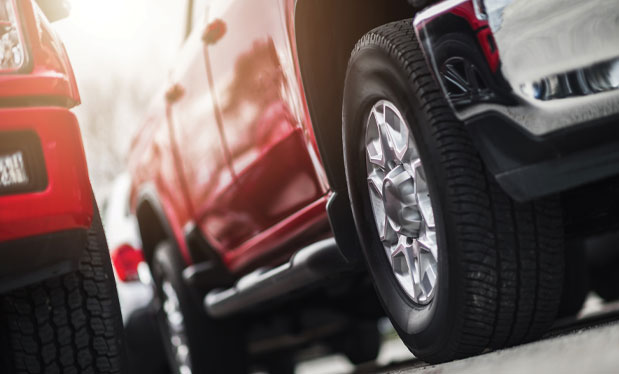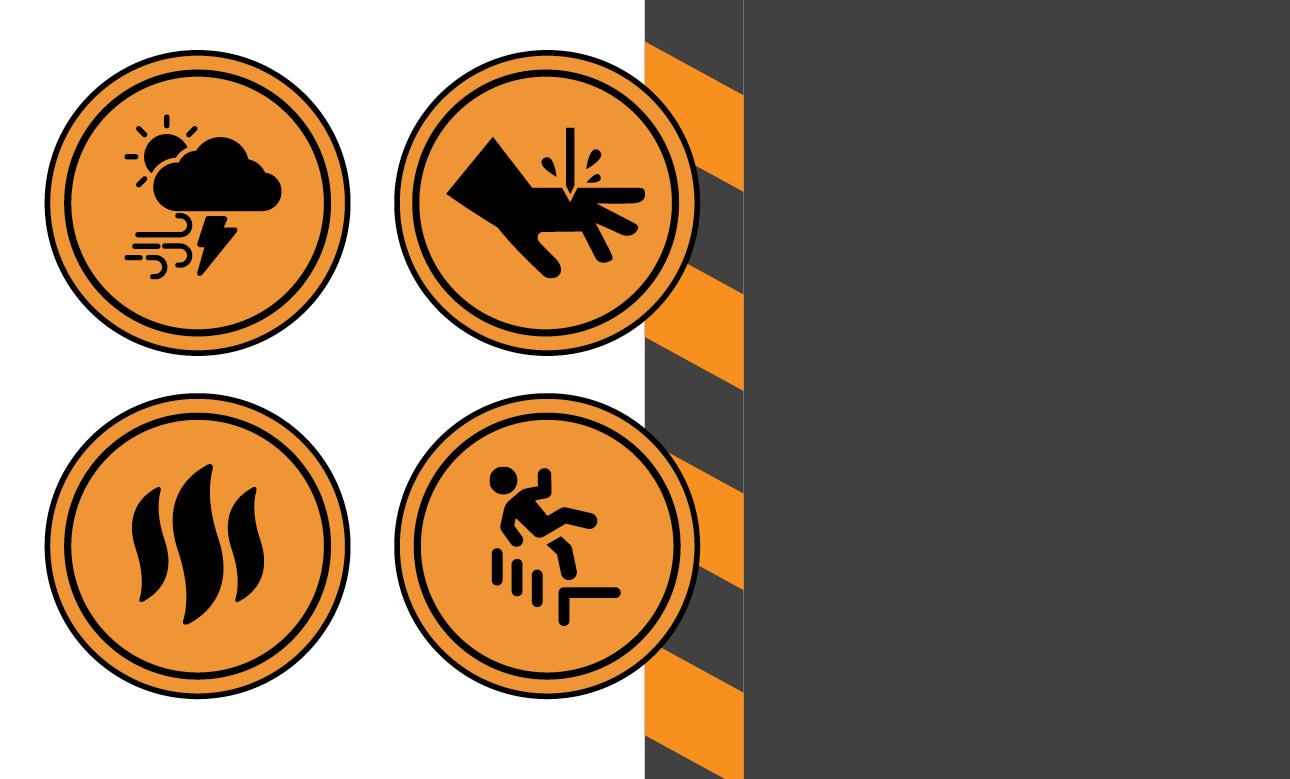
When you think about safety in the roofing industry, you most likely think about injury and fall prevention. However, fleet safety and safe driving should come to mind just as quickly.
Although falls are the leading cause of death in the roofing and construction industries, did you know the leading cause of workplace fatalities across all industries is motor vehicle accidents?
According to the most recent data from the Bureau of Labor Statistics, motor vehicle crashes are the first or second leading cause of death in every major industry group. In 2020 alone, BLS data shows 1,038 workers driving or riding in a motor vehicle on a public road were killed in a work-related crash, making up 22% of all work-related deaths. Of those deaths, the transportation and warehousing sector had the most deaths followed by construction, and 56% of the deaths were workers who were not employed as truck, bus or taxi drivers.
The Network of Employers for Traffic Safety reported in its Cost of Motor Vehicle Crashes to Employers that in 2019, motor vehicle crashes cost U.S. employers more than $72 billion in direct expenses, including medical care, liability, lost productivity and property damage. On average, a crash resulting in a nonfatal injury can cost an employer $75,000, and a fatal crash can cost more than $750,000. Consider also that employers pay directly and indirectly for crashes that happen on and off the job. For example, consider the costs involved if a company-owned vehicle is involved in an accident during nonbusiness hours or an employee is injured and cannot work even if he or she was driving a personal vehicle.
The cost of commercial auto insurance also continues to rise. Roofing industry insurance data shows there has been some decrease in the number of auto claims during the past several years; however, the severity of the claims is increasing because claims are drawn out over several years, driving premiums up. The increased cost of vehicle repairs, rising medical costs and a surge in costly lawsuits are driving the increased severity of claims.
In fact, a recent CBiz article about commercial auto trends for 2023 suggests insureds with larger fleets or poor loss histories could be more susceptible to continuing rate hikes, decreased capacity and potential coverage limitations even if they have enhanced driver safety programs and training and use motor vehicle records to vet drivers’ past experience and moving violations.
What is a fleet, really?
Fleet safety is a broad term, and some distinctions need to be made. Is a fleet composed of commercial motor or “light-duty” vehicles?
First, the Federal Motor Carrier Safety Administration defines a commercial motor vehicle as “any self-propelled or towed motor vehicle used on a highway in interstate commerce to transport passengers or property” that meets certain criteria, such as a weight rating of 10,001 pounds or more; transports eight or more passengers for compensation or more than 15 people without compensation; or transports hazardous materials.
Whether your company vehicles are classified as commercial has significant implications for federal and state requirements, including commercial driver’s licenses, driver drug and alcohol testing, driver-vehicle inspection reports, and possibly hours of service compliance and electronic logging devices for reporting hours of service. If your company owns and operates vehicles that fall under federal regulations, you must follow the FMCSA or Department of Transportation guidelines or risk incurring hefty fines, suspension of vehicles and even lawsuits.
A light-duty fleet, on the other hand, includes work trucks, pickup trucks, sedans, vans and other non-CDL vehicles that weigh less than 10,001 pounds and do not meet any other FMCSA definition for a commercial motor vehicle. A vehicle used commercially by or for the purpose of a business is not necessarily governed by federal requirements. That said, all vehicles operated by a business have risk associated with them. Many roofing contractors rely on these types of vehicles daily to transport personnel, perform services, or haul tools and materials to job sites.
Your responsibilities
As part of a sound safety management program, you should be using risk improvement strategies in all areas of your company, including fleet safety. Management commitment is an integral part of a successful fleet safety policy just as it is with a company’s overall safety management program.
Automobile accidents are an expensive liability for companies, and risks have increased recently mainly because of distracted driving and a legal concept called negligent entrustment. Negligent entrustment occurs when an employer is held liable for negligence in choosing an employee to operate a dangerous instrument, usually a vehicle. An employer can be found negligent if the employee is injured while driving for company business, causes injury to a third party or damages physical property.
Although business auto insurance policies generally do not exclude negligent entrustment, coverage may be insufficient if an employee is involved in a harmful accident. Juries often award plaintiffs punitive damages in addition to any compensatory damages resulting from negligent entrustment.
Driving records
CNA Insurance Cos., Chicago, recommends employers use good hiring practices, such as building an effective motor vehicle record program, by reviewing a new hire’s driving history and any moving violations. Such a program also will provide actionable performance data for evaluating employees’ driving records after employment.
Ensuring safe driver performance starts with hiring criteria and clearly communicating your company’s performance expectations and consequences. By successfully implementing or updating your program, you can help ensure your company has reliable, skilled employees who are familiar with their vehicles and qualified to operate company equipment.
You should obtain driver reports for all drivers of company-owned vehicles, as well as employees who rent or use their own vehicles for company business. CNA Insurance data shows companies that employ drivers with serious moving violations perform more than 20 points worse in loss ratio results than those whose employees have clean driving records.
Train drivers
Another pitfall related to fleet safety is insufficient employee training in the types of vehicles they will operate. A driver safety scorecard can help reveal your highest- and lowest-performing drivers to pinpoint who might need extra training or for future training sessions. The National Institute for Occupational Safety and Health recommends training include distracted driving, fatigue risk management and substance use awareness. CNA Insurance recommends contractors also focus on organization-specific incident causes and conduct ongoing training for all drivers.
Limit driver distractions
Distracted driving poses significant risk to every business that has employees who drive company-owned and personal vehicles for company business. Common activities that divert driver attention include texting, mobile phone use, eating or drinking, reaching for an object, talking with a passenger and reading navigation systems.
The Traffic Injury Research Foundation shows nearly 3,000 fatal and 205,000 nonfatal distraction-related motor vehicle accidents occurred in the U.S. and parts of Canada in 2020. This surpassed the number of accidents caused by impaired driving.
According to recently published data from Virginia Tech Transportation Institute, certain distracting tasks increase the likelihood of at-fault accidents occurring. Commercial motor vehicle drivers are six times more likely to be involved in a safety-critical event when using a handheld device, nearly six times more likely to be involved in a safety-critical event when reaching for an object and more than four times more likely to be involved in a safety-critical event when taking eyes off the road for more than two seconds.
Driver distractions come in many forms. Visual distractions inside and outside the vehicle, such as billboards and signs, other vehicles, pedestrians, passengers, mobile phones and infotainment systems, can divert a driver’s attention.
Auditory distractions, which include music, passengers, sirens and honking, may cause drivers to search for or look at the source of noise instead of the road. Manual distractions could include something a driver may reach for, such as a phone, food, papers, or manipulating a GPS system or computer.
Cognitive distractions, such as music and talking, daydreaming, work-related or personal stress, may cause a person to lose focus on the task of driving.
Vehicle maintenance
Most companies will benefit from adopting a vehicle maintenance policy as part of its overall fleet safety policy. Although this type of policy is not a regulatory requirement, it greatly increases compliance and sets standards for annual vehicle inspections, preventive maintenance and daily vehicle inspection reports.
When creating a vehicle maintenance schedule or checklist, it’s important to remember commercial vehicle parts may have distinct differences and need to be checked on different frequencies. Tire pressure, for instance, may need more frequent checks than brake fluid levels, so it’s important to schedule these checks accordingly. In general, a checklist should include the following:
- Checking fluid levels
- Inspecting the drivetrain, including engine, transmission and exhaust
- Examining wheels, tires and brakes for wear, damage and proper function
- Checking the chassis and body for damage
- Checking belts and hoses for wear or leaks
- Examining the electrical system, including battery, alternator and lights
- Checking systems for drivability and safety checks, including driver aids such as cruise control, warning systems, and parking brake and sensors
Telematics
Adopting telematics to get a more comprehensive view of your company’s fleet safety is another proactive measure viewed favorably by insurance companies.
Telematics is wireless technology, sometimes called a “black box” device, placed on vehicles to transmit data regarding vehicle use, GPS tracking, maintenance and servicing requirements.
For example, telematics can provide insight into drivers demonstrating risky behavior such as harsh braking or accelerating, hard cornering or lack of seat belt use. These risky behaviors have been shown to be predictive indicators of an accident unlike the limited insights provided by driving record checks and safety training. Although checking driver records and conducting driver safety training are integral parts of an overall fleet safety program, these measures provide limited insight into vehicle operation much of the time.
In addition to more effectively dispatching a fleet to a location with the use of telematics, adopting telematics can lead to safer behaviors by company drivers. Because these systems can be viewed negatively by employees, rather than focusing on identifying and punishing negative behaviors, you should highlight positive behaviors such as recognizing a driver of the month, highlighting a specific safe action by a driver, and incorporating examples of positive behaviors and the benefits into driver training.
Written policy
As part of your company’s overall safety management program, a fleet safety policy should set clear, consistent expectations and be communicated to all employees upon hiring and when updates are made. The policy should include management commitment; driver safety regulations; vehicle use; driver selection; training requirements and frequency; accident reporting procedures; and requirements for vehicle inspection, repairs and maintenance.
Continued focus
The best way to improve risk exposure related to fleet safety begins with a robust fleet safety program. An effective fleet safety program is a viable investment for any roofing contractor that will protect employees, minimize vehicle breakdowns, avoid potential lawsuits, ensure smooth operations and save fleet dollars while paying dividends in the long term.
Reach out to your insurance broker or carrier or NRCA’s enterprise risk management department for assistance. Don’t leave your company’s fleet safety to chance.
CHERYL M. AMBROSE, CHST, OHST, is NRCA’s vice president of enterprise risk management.



